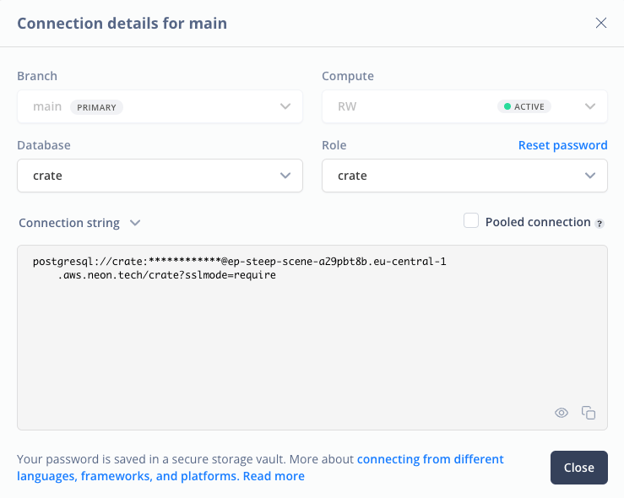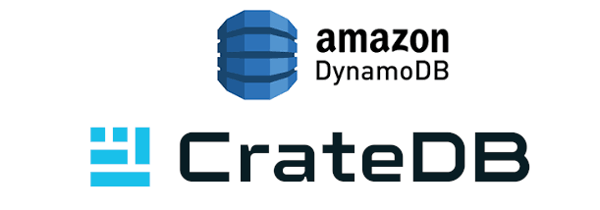We're excited to announce the integration of Foreign Data Wrappers (FDWs) in CrateDB 5.7, marking a significant enhancement in its data integration features.
Foreign Data Wrappers allow for direct access and manipulation of data residing in various databases and other data sources. Rooted in the SQL/MED (SQL Management of External Data) standard, it offers a uniform approach for databases to connect with external data sources, spanning SQL and NoSQL databases, file systems, and web services. The introduction of Foreign Data Wrapper in CrateDB serves to eliminate the existence of data silos and promotes a seamless integration within a heterogenous data environment.
In this blog post, we explore the practical application of CrateDB 5.7’s Foreign Data Wrapper support, particularly highlighting how it enables querying data stored in a PostgreSQL instance. Neon.tech is one of the leaders of serverless PostgreSQL solutions and offers an innovative, scalable, and cost-efficient service for managing databases. FDW streamlines data workflows, allowing for real-time data access and integration from external databases into CrateDB's environment.
Prerequisites
Before diving into the integration of CrateDB with serverless PostgreSQL, let's set up our environment. The first step involves ensuring you have a CrateDB instance up and running. You can easily set up a CrateDB cluster on CrateDB Cloud by following the instructions outlined in this tutorial.
The second step involves setting up a PostgreSQL Instance on Neon.tech:


Creating an Example Table
To illustrate the process of executing queries on a PostgreSQL instance from CrateDB utilizing Foreign Data Wrappers, we first create an example table in the PostgreSQL database with some basic information:
CREATE TABLE customers ( customer_id INT PRIMARY KEY, name VARCHAR(100), email VARCHAR(150) );
INSERT INTO customers (name, email) VALUES (1, 'John Doe', 'john.doe@example.com'), (2, 'Jane Smith', 'jane.smith@example.com'), (3, 'Alex Johnson', 'alex.johnson@example.com');
Now, if you navigate to the Tables tab in the neon.tech console, you can find the customers table with the initial data.
Accessing PostgreSQL Table from CrateDB
To access the customers table from CrateDB, you'll need to set up a Foreign Data Wrapper in CrateDB for your PostgreSQL instance. The process involves the following steps:
CREATE SERVER neon_server FOREIGN DATA WRAPPER jdbc OPTIONS (url 'jdbc:postgresql://ep-steep-scene-a29pbt8b.eu-central-1. aws.neon.tech/crate?sslmode=require');
CREATE USER MAPPING FOR USER SERVER neon_server OPTIONS ("user" 'admin', password '*******');
CREATE FOREIGN TABLE public.customers ( customer_id INT PRIMARY KEY, name TEXT, email TEXT ) SERVER neon_server OPTIONS (schema_name 'public');
SELECT * FROM public.customers; +--------------------------+-------------+--------------+ | email | customer_id | name | +--------------------------+-------------+--------------+ | john.doe@example.com | 1 | John Doe | | jane.smith@example.com | 2 | Jane Smith | | alex.johnson@example.com | 3 | Alex Johnson | +--------------------------+-------------+--------------+
This example illustrates the connection between CrateDB and PostgreSQL. To connect CrateDB with other databases via Foreign Data Wrappers, it is important to add the corresponding JDBC driver inside the CrateDB lib/ folder (all JAR files in this location will be added to the class path) and to adapt the JDBC connection string accordingly.
Possibilities with Foreign Data Wrappers
The possibility to query foreign tables from CrateDB through foreign data wrapper support opens a world of opportunities to further enhance data interaction and analysis, such as:
- Data Consolidation for Analytics: aggregate data from various databases into CrateDB for advanced analytics and reporting.
- Cross-Database Joins: use cross-database joins to combine data that resides in separate databases (like PostgreSQL and CrateDB) for complex queries. This can be particularly useful for businesses that store different parts of their data in different systems but need to analyze them as a whole.
- Data Access without ETL: access external data sources without the need for ETL processes.
- Migrate Data Between Systems: smoother data migrations between databases by allowing for direct access and manipulation of external data.
The addition of Foreign Data Wrapper support to CrateDB is a significant step forward, streamlining the integration of data from diverse data sources. This feature simplifies the process of accessing and combining data, enabling users to make the most of CrateDB's powerful analytics alongside the convenience of other databases.


